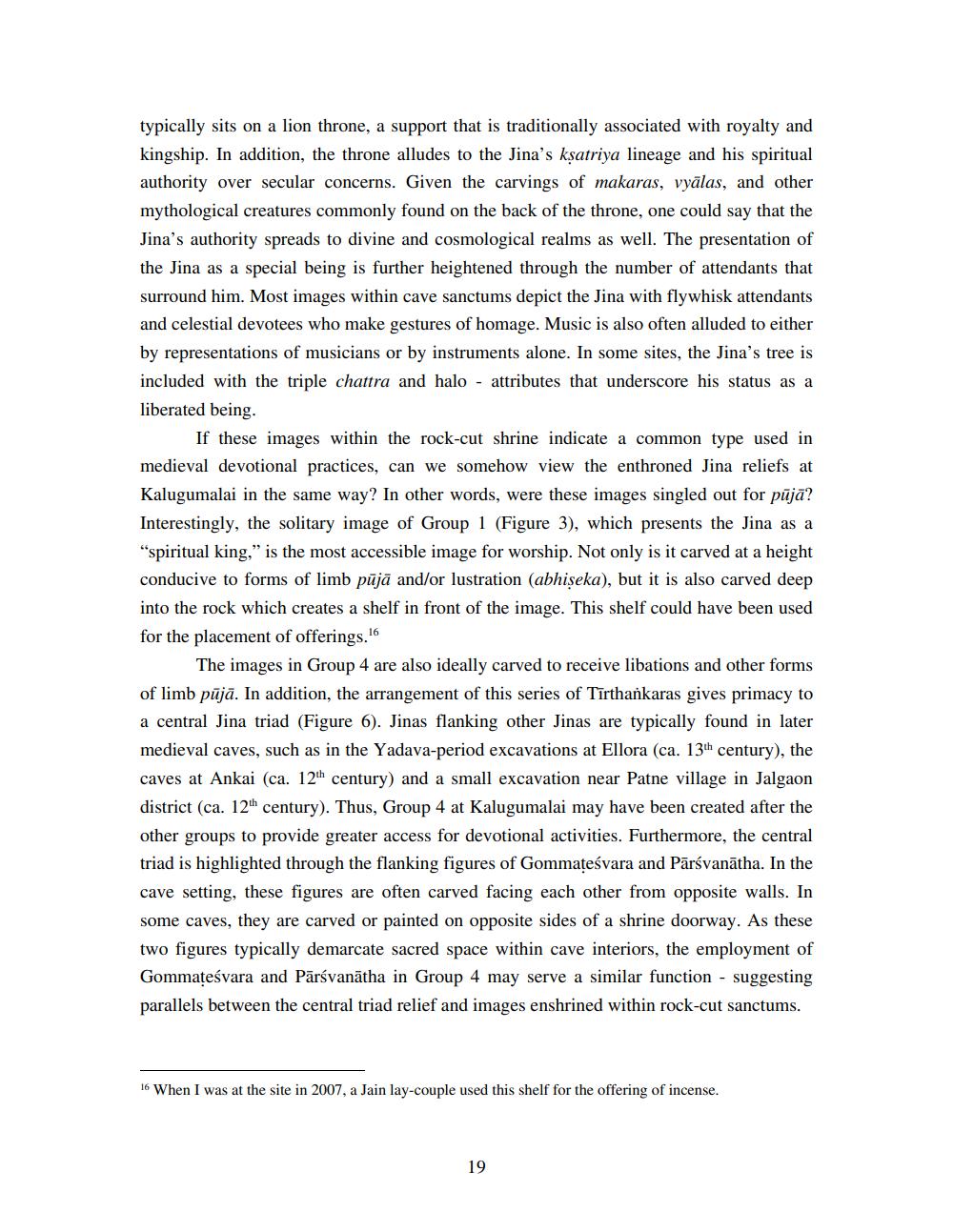________________
typically sits on a lion throne, a support that is traditionally associated with royalty and kingship. In addition, the throne alludes to the Jina's ksatriya lineage and his spiritual authority over secular concerns. Given the carvings of makaras, vyālas, and other mythological creatures commonly found on the back of the throne, one could say that the Jina's authority spreads to divine and cosmological realms as well. The presentation of the Jina as a special being is further heightened through the number of attendants that surround him. Most images within cave sanctums depict the Jina with flywhisk attendants and celestial devotees who make gestures of homage. Music is also often alluded to either by representations of musicians or by instruments alone. In some sites, the Jina's tree is included with the triple chattra and halo - attributes that underscore his status as a liberated being
If these images within the rock-cut shrine indicate a common type used in medieval devotional practices, can we somehow view the enthroned Jina reliefs at Kalugumalai in the same way? In other words, were these images singled out for pūjā? Interestingly, the solitary image of Group 1 (Figure 3), which presents the Jina as a "spiritual king,” is the most accessible image for worship. Not only is it carved at a height conducive to forms of limb pūjā and/or lustration (abhiseka), but it is also carved deep into the rock which creates a shelf in front of the image. This shelf could have been used for the placement of offerings.16
The images in Group 4 are also ideally carved to receive libations and other forms of limb pūjā. In addition, the arrangement of this series of Tīrthankaras gives primacy to a central Jina triad (Figure 6). Jinas flanking other Jinas are typically found in later medieval caves, such as in the Yadava-period excavations at Ellora (ca. 13th century), the caves at Ankai (ca. 12th century) and a small excavation near Patne village in Jalgaon district (ca. 12th century). Thus, Group 4 at Kalugumalai may have been created after the other groups to provide greater access for devotional activities. Furthermore, the central triad is highlighted through the flanking figures of Gommateśvara and Pārsvanātha. In the cave setting, these figures are often carved facing each other from opposite walls. In some caves, they are carved or painted on opposite sides of a shrine doorway. As these two figures typically demarcate sacred space within cave interiors, the employment of Gommateśvara and Pārsvanātha in Group 4 may serve a similar function - suggesting parallels between the central triad relief and images enshrined within rock-cut sanctums.
16 When I was at the site in 2007, a Jain lay-couple used this shelf for the offering of incense.
19




